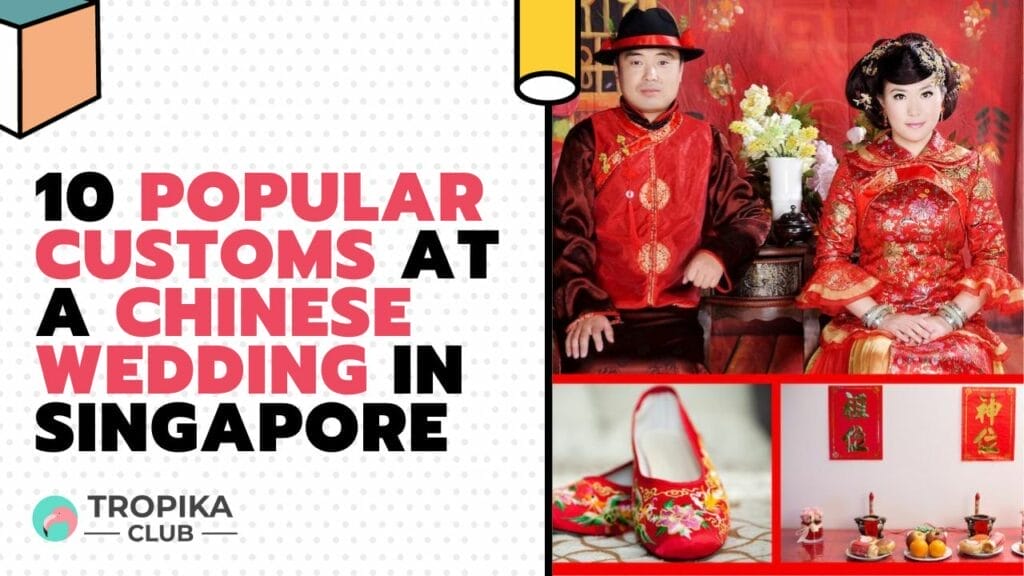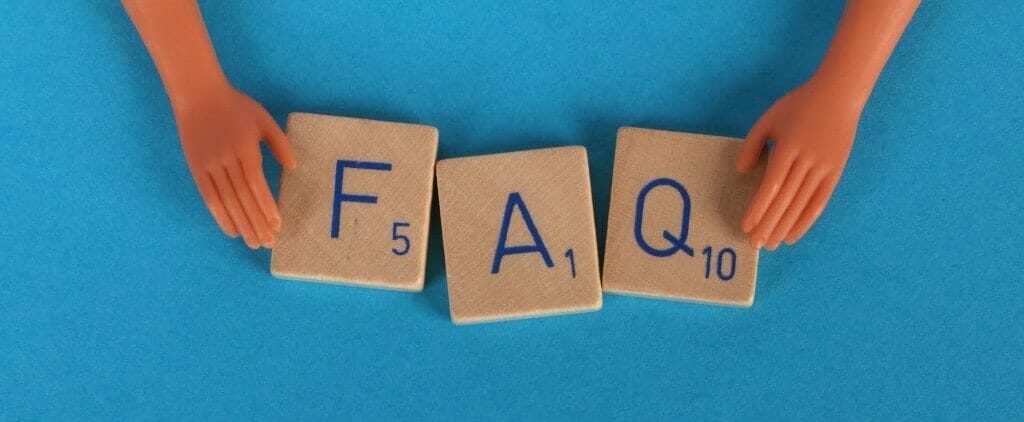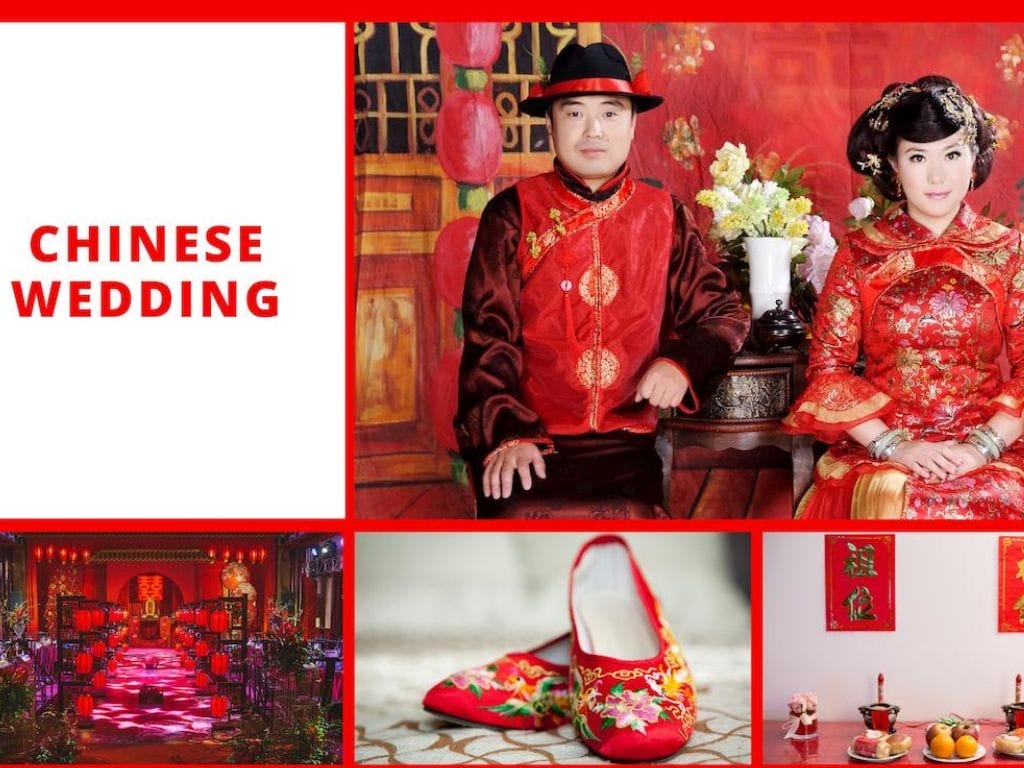10 Popular Customs at a Chinese Wedding in Singapore

No Time to Read? Here’s a Snappy Summary of This Article
- Red Envelope Ritual: Gift blessings and prosperity by giving money in vibrant red envelopes, a symbol of good luck.
- Tea Ceremony Tradition: Unite families through a symbolic tea-sharing ceremony, signifying respect and gratitude in Chinese culture.
- Dragon and Phoenix Symbolism: Embrace the mythical creatures in wedding decor, symbolizing power, prosperity, and the harmonious union of opposites.
- Traditional Wedding Attire: Brides showcase intricate qipaos, while grooms don elegant changshans, preserving cultural aesthetics and symbolism.
- Double Happiness Symbol: Spot the iconic “Shuang Xi” character, symbolizing joy and marital bliss, adorning everything from invitations to decorations.
- Auspicious Wedding Dates: Plan nuptials based on the Chinese lunar calendar, seeking fortune and harmony for the couple’s future together.
Table of Contents
- No Time to Read? Here’s a Snappy Summary of This Article
- 1. The Auspicious Date
- 2. The Betrothal Gifts
- 3. The Bride’s Dowry
- 4. Hair Combing Ceremony
- 5. The Wedding Attire
- 6. The Tea Ceremony
- 7. The Wedding Banquet
- 8. Gatecrashing Games
- 9. The Red Packet
- 10. The Second Day Visit
- Meanwhile, Check Out Tropika Club’s Ecosystem of Websites
Introduction
Weddings in Singapore are a vibrant blend of modernity and tradition, especially within the Chinese community. Each custom is a thread in the fabric of a lifelong partnership, woven with the blessings of ancestors and the vibrant spirit of contemporary life. This article unfolds the tapestry of 10 popular customs that adorn a Chinese wedding in Singapore, inviting us to appreciate the cultural richness that makes such celebrations uniquely enchanting.

1. The Auspicious Date
In the tapestry of Chinese weddings in Singapore, the selection of an auspicious date is paramount. This custom, rooted in astrology and tradition, is believed to set a harmonious path for the couple’s future. Families consult with a geomancer or ‘feng shui’ master to pinpoint a date that promises prosperity and good fortune. This practice underscores the cultural reverence for aligning life’s significant events with the cosmic order, a belief that continues to thrive in modern Singaporean society.

2. The Betrothal Gifts
Known as ‘Guo Da Li’, the exchange of betrothal gifts is a time-honored tradition symbolizing the formal agreement between the two families. The groom presents a carefully curated selection of gifts to the bride’s family, which often includes food items and symbolic artifacts. This ritual not only reinforces the bond between the families but also showcases the groom’s commitment and generosity towards the bride’s well-being and happiness.

3. The Bride’s Dowry
The dowry, or ‘Jia Zhuang’, comprises gifts from the bride’s parents to the newlyweds, signifying their blessings and support. Items typically include household essentials, jewelry, and sometimes, the iconic ‘Si Dian Jin’ – a set of gold jewelry given to the bride. This custom reflects the enduring values of family unity and the passing of wisdom and wealth through generations in Singapore’s Chinese community.

4. Hair Combing Ceremony
On the eve of the wedding, the ‘Shang Tou’ ceremony takes place. It’s a poignant moment where the bride and groom, in their respective homes, undergo a hair combing ritual. This act, performed by a parent or elder, is laden with symbolism, marking the transition from youth to adulthood. The gentle strokes of the comb are accompanied by well-wishes, encapsulating the community’s deep-seated hopes for a fruitful and harmonious marriage.

5. The Wedding Attire
In Singapore, the traditional ‘Qun Kwa’ for brides and the ‘Ma Gua’ for grooms are often worn with pride. These garments are not mere clothing but are embroidered with dragons, phoenixes, and other auspicious symbols, each stitch telling a story of heritage and identity. The vibrant reds and intricate designs are a visual feast, embodying the joy and solemnity of the wedding day.

6. The Tea Ceremony
The ‘Jing Cha’ ceremony is a gesture of respect and gratitude. The couple serves tea to their elders, starting with the groom’s parents, followed by relatives, in a sequence that honors seniority. Each sip is an acknowledgment of the family’s legacy and the couple’s entry into marital life. This ceremony is a cornerstone of Chinese weddings in Singapore, fostering a sense of continuity and respect for familial ties.
_
Read Also:
Great Tips for Making Your Wedding Day Shine!
_

7. The Wedding Banquet
The wedding banquet is a grand affair, often held in a hotel or a specialized wedding venue. Tables are laden with sumptuous dishes, each with its own symbolic meaning. From the ‘Yu Sheng’ for abundance to the ‘Fa Cai’ for prosperity, the culinary spread is a gastronomic representation of the couple’s wishes for a blessed life ahead. It’s a celebration where every flavor tells a story of hope and happiness.

8. Gatecrashing Games
A lighter, more playful tradition is the ‘gatecrashing’ ritual, where the groom and his groomsmen must overcome challenges set by the bridesmaids to ‘earn’ his way to the bride. These games are filled with laughter and good-natured teasing, reflecting the joyous spirit of the occasion. It’s a modern twist to the wedding customs, adding a uniquely Singaporean flavor to the day’s festivities.

9. The Red Packet
The ‘Hong Bao’, or red packet, is a staple at Chinese weddings in Singapore. Guests present these envelopes, with money inside, to the couple as a token of good luck and to help kickstart their journey together. The red color symbolizes good fortune and joy, and the act of giving reflects the community’s collective wishes for the couple’s prosperous future.

10. The Second Day Visit
After the wedding, it’s customary for the couple to visit the bride’s parents on the second day, known as ‘Hui Men’. This visit is more than a formality; it’s a reassurance to the bride’s parents that their daughter is well and that the marital bond extends to both families. It’s a poignant reminder that while the wedding is a union of two people, it’s also the coming together of two families.
Conclusion
In the Lion City, these customs remind us of a harmonious dance between tradition and modernity. They are the steps in a timeless dance, where the old and the new move in perfect sync, crafting moments of joy that transcend the boundaries of time.
As the red lanterns sway gently in the breeze and the laughter of celebration fades into the night, the essence of these customs remains. They continue to beat in the hearts of the newlyweds and their families, a rhythm of love and unity that continues to reverberate long after the festivities have concluded.
So, as we celebrate these customs, we are not just observing rituals. We are participating in a living tradition, a celebration of cultural identity that is as vibrant and dynamic as the city itself. We are reminded that in every corner of Singapore, in every joyous celebration, tradition and modernity dance in harmony, crafting moments of timeless joy.

Frequently Asked Questions (FAQ)
Q: What is the significance of the red envelopes in a Chinese wedding in Singapore?
A: Red envelopes, or “hongbao,” symbolize good luck and prosperity, often given as gifts to bless the newlyweds.
Q: How does the tea ceremony contribute to a Chinese wedding in Singapore?
A: The tea ceremony is a symbolic gesture of respect, gratitude, and the unity of families during the wedding.
Q: Why are dragons and phoenixes prominently featured in Chinese weddings in Singapore?
A: These mythical creatures represent power, prosperity, and the harmonious union of opposites, adding symbolic depth to the celebration.
Q: What is the significance of the “Double Happiness” symbol in Chinese weddings?
A: The “Shuang Xi” symbol embodies joy and marital bliss, featured on invitations and decorations for its auspicious connotations.
Q: Can you explain the traditional attire worn by brides and grooms in Chinese weddings in Singapore?
A: Brides often wear intricate qipaos, while grooms don elegant changshans, preserving cultural aesthetics and symbolism.
Q: How do couples in Singapore choose auspicious wedding dates based on the Chinese lunar calendar?
A: Couples often consult the Chinese lunar calendar to select dates believed to bring fortune and harmony to their future together.

Have an Article to Suggest?
Tropika Club is always looking for new and exciting content to feature in their magazine and they value the input of our readers. If you have any noteworthy content or articles that you believe would be a great addition to Tropika Club’s magazine, we are open to suggestions and encourage you to reach out to us via email at [email protected]. By doing so, Tropika Club values your expertise and knowledge in the matter and appreciates your willingness to help. We will review your recommendations and update our list accordingly
Meanwhile, Check Out Tropika Club’s Ecosystem of Websites
Tropika Club Magazine – Tropika Club Magazine is a Singapore-based publication that features articles on a wide range of topics with a focus on local businesses and content for the region. The magazine emphasizes supporting local businesses through its #SupportLocal initiative, which includes coverage of everything from neighborhood hawker stalls to aesthetic clinics in town. In addition to highlighting local businesses, Tropika Club Magazine also covers a variety of local content, including beauty, lifestyle, places, eats, and what’s on in Singapore and the Asia Pacific region.



